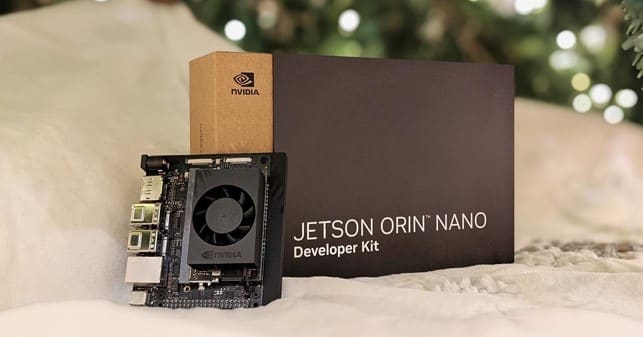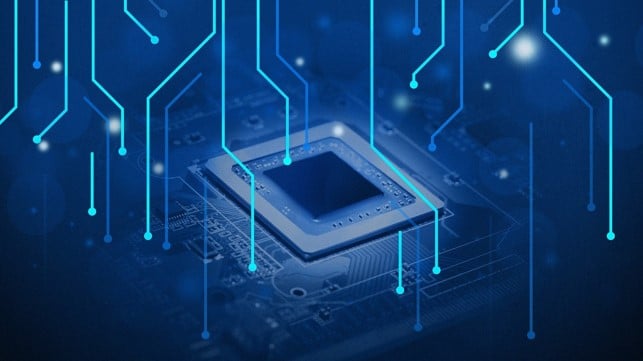On December 17th NVIDIA has released a new compact generative AI supercomputer – Jetson Orin Nano Super Developer Kit. The device, which measures small enough to fit in one’s hand, provides increased performance for generative AI capabilities. This release piqued interest in the tech community, as in some opinion, the ability to run AI without relying on the cloud could lead to one of the biggest tech battles we’ve seen. This article breaks down the essence of AI-powered supercomputers, the standout features of the Jetson Orin Kit, and the far-reaching impacts of these technological advancements.
What is an AI-Powered Supercomputer?
AI supercomputers are built with precisely tuned hardware, comprising hundreds of thousands of processors, specialized networking systems, and vast amounts of storage. These supercomputers distribute tasks across multiple processors, with each processor handling a small portion of the workload. While working on their individual tasks, processors constantly communicate via a complex network, exchanging information in multiple directions—up, down, left, right, front, and back—depending on the nature of the problem. This multidirectional communication ensures that workloads stay synchronized, enhancing overall processing efficiency and speed.
To achieve faster performance, AI supercomputers rely on densely packed, smaller circuits within their boards. However, this design comes with a trade-off: increased heat generation. The challenge arises from the inefficiency in power transfer to and from the chips, causing them to overheat. To manage this, supercomputers are equipped with advanced cooling systems, including copper wiring for efficient energy transfer, forced air systems to dissipate heat, and refrigerants circulated throughout the system to keep temperatures in check. These measures ensure the supercomputer remains operational even under heavy workloads.

Key Features of the Jetson Orin Nano Super Developer Kit
The NVIDIA Jetson Orin Nano Super Developer Kit showcases the progress in AI-powered supercomputers, offering high performance in a compact and affordable design. Small enough to fit in the palm of your hand, it delivers as much as a 1.7x leap in generative AI inference performance, a 70% increase in performance to 67 INT8 TOPS, and a 50% increase in memory bandwidth to 102GB/s compared with its predecessor. Equipped with an NVIDIA Ampere architecture GPU, tensor cores, and a 6-core Arm CPU, it efficiently runs advanced AI models such as vision transformers and large language models. The kit also supports up to four high-resolution cameras, making it suitable for applications like autonomous robotics and visual AI systems. At $249 USD, it provides accessible tools for developers to explore and create with generative AI technologies.
Ripple Effect of AI Supercomputers
The advent of AI-powered supercomputers like the Jetson Orin Nano Super Developer Kit has sparked a ripple effect across industries and nations. By enabling on-device AI processing, these systems eliminate the dependency on cloud-based solutions, significantly reducing latency and increasing efficiency. Governments and organizations recognize the strategic importance of sovereign AI, leading to significant investments in domestic AI infrastructure. For instance, this December the European Commission in Brussels has pledged €750 million for seven sites across Europe to establish and maintain AI-optimized supercomputers accessible to startups to train their AI models. In addition the integration of AI in supercomputing contributes to progress in various fields, improving energy efficiency, supporting global competitiveness, and helping to address complex societal challenges.
Conclusion
AI-powered supercomputers are at the forefront of computational technology, offering a balance of speed, efficiency, and versatility to tackle complex global challenges. Devices like NVIDIA’s Jetson Orin Nano Super Developer Kit enhance the capabilities of edge computing, allowing individuals and organizations to leverage AI in practical applications. As more countries and industries adopt these technologies, we can expect a future where intelligent, efficient, and sustainable solutions become more commonplace.
Sources:
https://www.infoq.com/news/2024/12/nvidia-jetson-ai-supercomputer
https://blogs.nvidia.com/blog/jetson-generative-ai-supercomputer
https://www.hpe.com/emea_europe/en/what-is/ai-supercomputing.html
https://nvidianews.nvidia.com/news/nvidia-grace-hopper-ignites-new-era-of-ai-supercomputing
https://www.politico.eu/article/europe-costly-artificial-intelligence-race-supercomputer-startups

